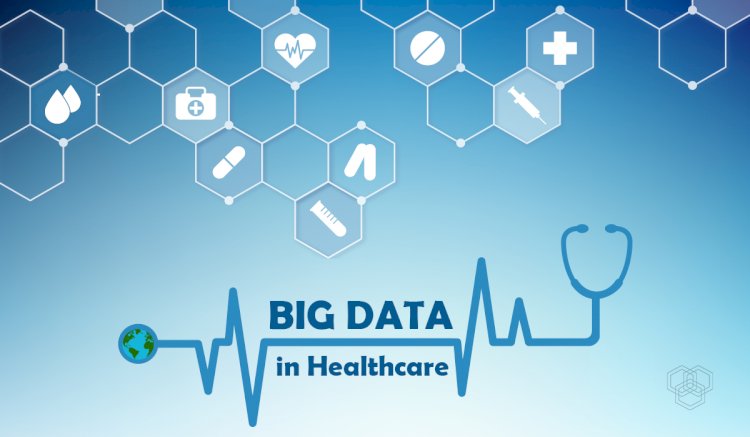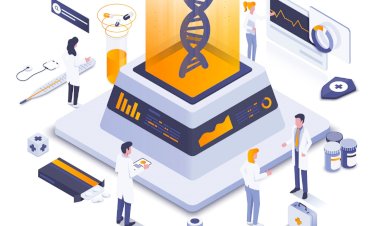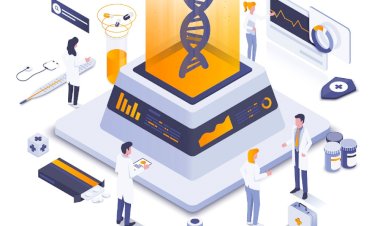Big Data in Healthcare
“Big data in healthcare” refers to the abundant health data collected from numerous sources including electronic health records (EHRs), medical imaging, genomic sequencing, payor records, pharmaceutical research, wearables, and medical devices.

What is Big Data?
Big data refers to the large, diverse sets of information that grow at ever-increasing rates. Big Data is a term used to describe a collection of data that is huge in volume and yet growing exponentially with time. In short, such data is so large and complex that none of the traditional data management tools can store it or process it efficiently.
Big Data in Healthcare
“Big data in healthcare” refers to the abundant health data collected from numerous sources including electronic health records (EHRs), medical imaging, genomic sequencing, payor records, pharmaceutical research, wearables, and medical devices, to name a few. Three characteristics distinguish it from traditional electronic medical and human health data used for decision-making.
Healthcare big data defines collecting, analyzing, and leveraging consumer, patient, physical, and clinical data that is too vast or complex to be understood by traditional means of data processing. Instead, big data is often processed by machine learning algorithms and data scientists. The rise of healthcare big data comes in response to the digitization of healthcare information and the rise of value-based care, which has encouraged the industry to use data analytics to make strategic business decisions. Faced with the challenges of healthcare data – such as volume, velocity, variety, and veracity – health systems need to adopt technology capable of collecting, storing, and analyzing this information to produce actionable insights.
- Improve care personalization and efficiency with comprehensive patient profiles.
- Inform physician relationship management efforts by tracking physician preferences, referrals, and clinical appointment data.
- Boost healthcare marketing efforts with information about consumer, patient, and physician needs and preferences.
- Provide straightforward identification of patterns in health outcomes, patient satisfaction, and hospital growth.
- Optimize hospital growth by improving care efficiency, effectiveness, and personalization.
How Big Data Is Helping Healthcare Right Now
More Precise Treatment
Information gathered from big data gives providers more insights than they would have otherwise. Collecting data in these ways allows for better decisions, fewer cases of guessing, and better overall patient care. These patients are most likely to benefit from home care, which vastly improves their quality of life. Big data can also identify those at increased risk of illness, giving them more control of their health with minimal medical intervention.
Preventing Cases Before They Occur
The Internet of Things (IoT) has resulted in devices like Fitbit and the Apple Watch to track physical movements and increase overall health, with capabilities to send that data to physicians so they can monitor progress. Partnerships between IoT and healthcare companies are further progressing this goal.
Traditional healthcare databases are often cumbersome and costly. Big data can help improve this problem through simpler design and more user-friendly maintenance. Hadoop clusters help to store big data by rebuilding failed nodes. This, in turn, makes technological mishaps much easier to recover from. Built from inexpensive hardware, Hadoop clusters run on direct-attached configurations instead of storage area networks. Hadoop’s ability to synthesize disparate data enables users to identify conditions missed by doctors.
Managed Care
Big Data serves as the foundation for how a provider is measured and rewarded for ensuring the good health of a patient. Providers are graded on the quality of care they deliver, often derived from biometric data (BMI, A1c, blood pressure, etc.), as well as completion of yearly preventive and routine care for their patient population.
Many health plans have some type of risk stratification program in place. Risk stratification is based on using big data to ascribe a risk score (low to high) to a patient based on criteria set including—at a minimal—diagnoses, comorbidity, gender, and age. For example, many health plans know when a high-risk patient is discharged from a hospital, they are less likely to follow up with their provider or fill their script.
References
12 Examples of Big Data In Healthcare That Can Save People. (2019, December 10). Retrieved June 16, 2020, from https://www.datapine.com/blog/big-data-examples-in-healthcare/
6 Ways Big Data is Changing the Healthcare Industry. (2019, October 29). Retrieved June 16, 2020, from https://www.analyticsinsight.net/6-ways-big-data-is-changing-the-healthcare-industry/

 Meghana
Meghana 



































